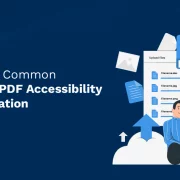The instructional design process blends learning psychology and technology to create engaging and effective training materials. Multimedia options like video and games-based learning principles are now essential in instructional design, making the learning experience enjoyable and effective for learners.
Q: What is Instructional Design?
A: The process of creating educational experiences and materials to support successful and efficient learning is known as course design.
Q: What are the key components?
A: Analyzing learners and their learning requirements, establishing learning objectives, creating instructional materials and assessments, providing and facilitating learning experiences, and assessing learning results are some of the fundamental elements of instructional design.
Q: What is the purpose?
A: Creating effective and efficient learning experiences that encourage the acquisition and application of knowledge and skills is the goal.
Q: What are some models?
A: SAM (Successful Approximation Model), Rapid Prototyping, and ADDIE (Analysis, Design, Development, Implementation, Evaluation) are a few examples of instructional models.
Q: What are the benefits?
A: Improved learning outcomes, shorter development times, lower costs, and more scalability and accessibility of learning experiences are all advantages.
Q: What are some challenges?
A: Aligning instructional goals with learner needs and preferences, creating efficient assessments, and ensuring that instructional materials are inclusive and accessible to all learners are some of the challenges.
Q: How can technology support?
A: By offering tools for developing and delivering digital instructional materials, promoting online collaboration and communication, and gathering and analyzing data on learner progress and results.
Q: What is the future?
A: With ongoing technological advancements and research supporting the creation of new models and tactics to foster effective and efficient learning, the future of instructional design is bright. HurixDigital leads the way by delivering innovative, technology-driven solutions that enhance learning experiences and outcomes.



